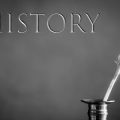Introduction to Prophecy and Divination in British Folklore
Prophecy and divination have occupied a central place in the tapestry of Celtic and broader British folklore, shaping communal beliefs, rituals, and even political decisions throughout the ages. These practices—rooted in attempts to foresee or influence future events—served not only as spiritual guidance but also as practical tools for navigating the uncertainties of daily life. In ancient Celtic societies, druids, seers, and wise women were revered for their abilities to interpret omens, dreams, and natural phenomena, often acting as intermediaries between the mortal world and supernatural forces. As these traditions evolved within the diverse cultural landscape of Britain, prophecy and divination became intertwined with local customs, seasonal festivals, and oral storytelling. Their enduring presence reflects both a historical quest for meaning amidst chaos and a uniquely British approach to fate, fortune, and the unknown. By examining their historical context and cultural impact, we can better understand how these mystical arts helped shape the collective psyche and folklore of Britain.
Ancient Celtic Divinatory Practices
The Celts, renowned for their rich oral traditions and mystical worldview, developed a variety of divinatory techniques to gain insight into the future and interpret the will of the gods. Rooted in both ritual and everyday observation, these methods reveal a society deeply attuned to nature and symbolism.
Augury: Reading the Will of the Gods through Nature
Augury, the practice of interpreting omens from the natural world—especially birds—was a cornerstone of ancient Celtic prophecy. Druidic seers would observe the flight patterns, calls, and behaviour of birds to glean messages about forthcoming events or decisions. This technique was not merely superstition; it reflected a belief in the interconnectedness between humans and nature, where the natural world served as a divine script waiting to be deciphered.
Key Elements Observed in Augury
| Element Observed | Typical Interpretation |
|---|---|
| Flight Direction | Auspicious or ominous outcomes depending on whether birds flew left (sinister) or right (dexter) |
| Type of Bird | Certain species, such as ravens or swans, held specific prophetic significance |
| Number of Birds | Larger groups could indicate greater importance or intensity of omens |
| Calls or Songs | Unusual sounds could signify warnings or blessings from the Otherworld |
Ogham Script Readings: The Language of Trees and Stones
The ogham alphabet, inscribed on stones and wood, was more than a simple writing system; it carried esoteric meaning and was sometimes used for divination. Each character corresponded to a tree or plant with its own symbolic qualities. Druids and bards might draw ogham marks or cast ogham sticks to receive guidance, treating each symbol as a message from the spiritual realm.
Sample Ogham Symbols and Their Meanings
| Ogham Symbol | Associated Tree/Plant | Interpretative Meaning |
|---|---|---|
| Beith (ᚁ) | Birch | Beginnings, purification, new opportunities |
| Duir (ᚇ) | Oak | Strength, endurance, wisdom gained through trials |
| Nuin (ᚅ) | Ash | Connection between worlds, spiritual insight |
| Tinne (ᚈ) | Holly | Protection, overcoming adversity |
The Interpretation of Natural Omens: Signs in Everyday Life
Beyond formal rituals, ancient Celts constantly read signs in their environment. Weather patterns, animal behaviour, and even the appearance of certain plants could serve as indicators for future events. These interpretations were embedded within local folklore and varied by region and season. For example, an unexpected mist might suggest an imminent visit from the Otherworld, while blossoming hawthorn in spring was seen as a sign of good fortune.
This holistic approach to divination illustrates how prophecy in Celtic tradition was woven into daily experience—each event or phenomenon potentially carried hidden meaning for those attuned to its significance.
![]()
3. Prophetic Figures and Legendary Seers
Within the rich traditions of Celtic and British folklore, prophetic figures have played a pivotal role in shaping cultural narratives and beliefs about fate and destiny. The most prominent among these are the Druids, ancient Celtic priests renowned for their wisdom, knowledge of the natural world, and their mystical abilities. Historical accounts, such as those by Julius Caesar, describe Druids as intermediaries between the human and spiritual realms, often consulted for divinatory insights during times of uncertainty or war. Their rituals frequently involved interpreting omens from nature—whether through observing the flight of birds or reading patterns in sacrificial remains—cementing their reputation as master seers.
Equally significant is the legendary figure of Merlin, whose mythos is deeply embedded within British folklore. While Merlin’s origins are complex—drawing from Welsh bardic tradition and early medieval literature—he is most famously depicted in Arthurian legend as King Arthur’s wise advisor and prophet. Stories recount Merlin’s uncanny ability to foresee political upheaval and his involvement in shaping Britain’s destiny, blending druidic lore with Christian symbolism. Over centuries, Merlin has become an archetype of the enigmatic seer: a bridge between ancient pagan wisdom and emerging medieval ideologies.
The influence of such figures extends well beyond historical or literary contexts. In modern British culture, references to Druids and Merlin persist in place-names, festivals like Beltane at Stonehenge, and popular media. They embody the enduring fascination with prophecy and the supernatural—a testament to how these legendary seers continue to inform contemporary understandings of fate, leadership, and spiritual insight within the United Kingdom.
4. Folk Methods of Fortune-Telling in British Tradition
Within the fabric of British folklore, everyday methods of divination have endured, reflecting a deeply-rooted fascination with fate and the unknown. These practices, often intertwined with rural customs and social rituals, represent the living heritage of prophecy within ordinary life. This section systematically explores some of the most prevalent folk fortune-telling techniques—palmistry, tea leaf reading, and region-specific superstitions—that continue to shape communal beliefs across Britain.
Palmistry: Reading Fate in the Hand
Palmistry, or chiromancy, is an ancient method of divination that remains popular throughout Britain. Practitioners interpret the lines, mounts, and shapes of the hand to reveal character traits and predict future events. The practice was especially widespread during the Victorian era, where it became both a parlour amusement and a serious pursuit. Despite its mystical origins, palmistry has been woven into modern British culture, often surfacing at fairs and local gatherings.
| Hand Feature | Traditional Interpretation |
|---|---|
| Heart Line | Emotional stability and romantic prospects |
| Head Line | Intellectual tendencies and decision-making |
| Life Line | General well-being and major life changes |
| Mounts (e.g., Mount of Venus) | Strengths relating to love or ambition |
Tea Leaf Reading: The Art of Tasseography
The ritual of reading tea leaves—tasseography—emerged as a quintessentially British pastime in the 19th century, coinciding with the nation’s fervent tea culture. After finishing a cup of loose-leaf tea, participants would swirl the remaining dregs and invert the cup onto a saucer. The resulting patterns were then interpreted for omens or guidance regarding one’s future. Symbols such as rings (marriage), birds (good news), or crosses (challenges) are still referenced by enthusiasts today.
Common Tea Leaf Symbols and Their Meanings
| Symbol | Interpretation |
|---|---|
| Ring | Upcoming marriage or commitment |
| Bird | Message or good news arriving soon |
| Cloverleaf | Lucky events on the horizon |
| Snake | Betrayal or deceit in relationships |
Localised Superstitions: Regional Variations Persisting Today
Beneath these broader traditions lie countless regional superstitions unique to various parts of Britain. For example, in Yorkshire, seeing a magpie alone is considered unlucky unless one salutes it; in Cornwall, turning a loaf upside down brings misfortune; while in Scotland, first-footing—a New Year tradition involving the first visitor—can influence household luck for an entire year. These beliefs continue to be observed informally within communities, serving as both social glue and subtle vehicles for expressing hopes or anxieties about what lies ahead.
5. Rituals and Seasonal Divinations
Throughout the British Isles, prophecy and divination have been closely interwoven with seasonal festivals, reflecting the cyclical rhythms of nature and communal life. These rituals were not merely personal quests for knowledge but played a significant role in fostering social cohesion and transmitting cultural values. Two of the most influential festivals—Samhain and Beltane—serve as prime examples of how divinatory practices were embedded within community celebrations.
Samhain: The Liminal Gateway
Samhain, marking the end of the harvest and the onset of winter, was regarded as a liminal period when the boundaries between worlds grew thin. This temporal threshold was seen as an auspicious time for seeking omens about the future. Traditional divinations included apple bobbing to reveal romantic destinies, interpreting the shapes of melted lead poured into water, or setting out symbolic objects to invite dreams from ancestors. Such rituals provided individuals with a sense of agency amidst uncertainty while reinforcing shared mythologies about death, renewal, and ancestral wisdom.
Beltane: Fertility and Prognostication
In contrast, Beltane celebrated fertility and new growth at the onset of summer. Communities engaged in fire-jumping rituals and flower crown making, both believed to bring luck and foretell prosperity for the coming months. Divinatory acts during Beltane often centred on agricultural outcomes or matrimonial prospects—critical concerns in rural life. For instance, young people would interpret the flow of smoke from bonfires or engage in dream incubation by placing flowers under their pillows, hoping to receive prophetic visions related to love or fortune.
Community Integration and Social Function
These seasonal divinations were more than individual superstitions; they served as structured communal activities that reinforced social bonds. Participation in festival rites offered reassurance against collective anxieties about weather, health, or crop yields. By performing these rituals together, communities established a shared narrative regarding fate and continuity—a mechanism for coping with unpredictability that is still echoed in modern customs such as Halloween traditions or May Day festivities.
Legacy in Contemporary Practice
Although contemporary society has become increasingly secularised, echoes of these ancient divinatory rituals persist in British culture. Events like village fairs and local celebrations continue to feature games and customs rooted in folklore, subtly maintaining links with ancestral practices. In this way, prophecy and divination endure—not simply as arcane curiosities but as living traditions shaping communal identity across generations.
6. Contemporary Perspectives and Enduring Beliefs
The legacy of prophecy and divination in Celtic and British folklore is complex, marked by both continuity and transformation. In modern Britain and Celtic regions such as Wales, Scotland, and Ireland, traditional practices like augury, dream interpretation, and even ogham reading have not disappeared entirely. Instead, they have adapted to contemporary sensibilities, often shifting from community rituals to more individual or symbolic engagements. While the scientific worldview has challenged the literal belief in such practices, many people still engage with tarot readings or astrology out of curiosity or for personal reflection rather than strict prediction.
Persistence in Modern Culture
Certain folk traditions continue to influence popular culture. For example, seasonal festivals such as Samhain—once a key moment for prophecy—are now celebrated as Halloween, retaining echoes of their mystical origins. Folklore societies and local heritage groups often revive old customs for educational or cultural tourism purposes, keeping ancestral knowledge alive within a new framework.
Evolved Practices and New Interpretations
Some ancient divinatory techniques have evolved into new forms. Ogham stones may now be studied for their historical significance rather than magical properties, but interest in their symbolism persists among neo-pagan communities. Similarly, seership has found a new audience through spiritualist movements or within holistic wellness circles. The language may have changed—talking of “intuition” instead of “prophecy”—but the underlying human desire for insight into the future endures.
Fading Traditions
Nevertheless, many prophetic customs have faded into obscurity or survive only as vestiges in local sayings or superstitions. Urbanisation and rationalism have contributed to the decline of communal divination rituals that once played central roles in rural life. Yet even as direct practice wanes, these traditions remain woven into national identity through literature, place-names, and collective memory.
In summary, prophecy and divination in Celtic and British folklore persist today more as cultural artefacts and sources of inspiration than as universally accepted truths. They represent a living link between past and present—a testament to both the adaptability of folk beliefs and the enduring human fascination with the unknown.


